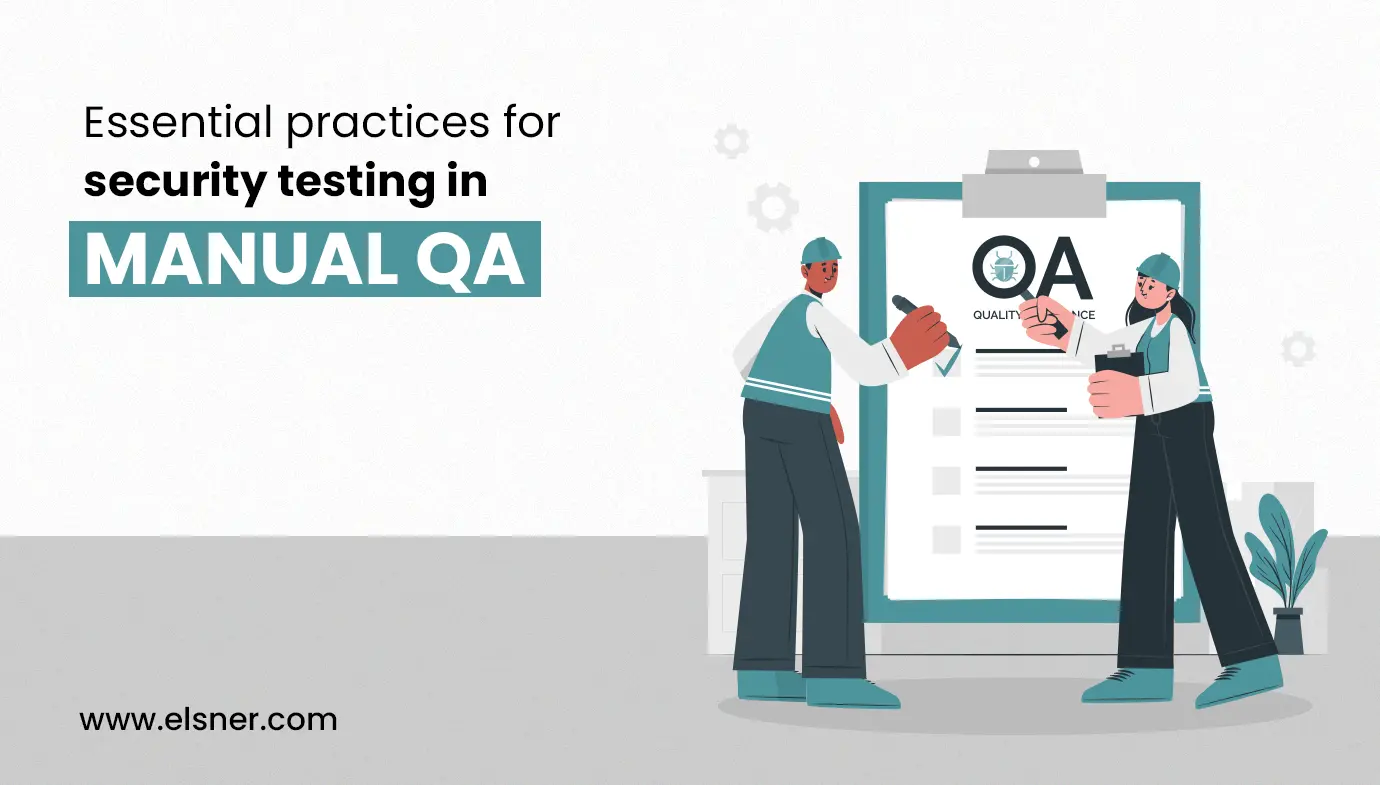- In What Ways Is Manual Testing Important?
- 1. Some Tests are Meant to be Conducted Manually
- 2. Ability to Find Bugs in the Most Unexpected Places
- 3. Budget-Friendly for the Smaller Projects
- What are the Common Myths Associated with Manual Testing and Their True Facts?
- 1. Manual Testing is Fairly Easier than Automation Testing
- 2. Manual Testing is an Older and outdated technique
- 3. Manual Testing Begins only During the Post-Development Stage
- What are the Different Types of Manual Testing Methods?
- 1. Exploratory Testing:
- 2. Smoke Testing:
- 3. Usability Testing:
- 4. GUI Testing:
- 5. Compatibility Testing:
- 6. Localization Testing:
- 7. Regression Testing:
- What are Some of the Recommended Manual Testing Tools?
- 1. Test Case Management:
- 2. Bug Tracking Tools:
- 3. Cross Browser Testing:
- 4. Screen Capture:
- Final Words
When getting a new software or application developed, testing is one of the most crucial stages to determine the performance and reliability of the end product. In the modern world, there are two approaches to testing software: automated and manual.
Most QA testing professionals strategically implement both automated as well as manual testing approaches, to derive the best outcomes. But, the manual and automated techniques are way too different from one another and can’t be used interchangeably.
The fundamentals of automated testing are quite clear as it uses specific tools and frameworks for speeding up the workflows and maximizing the software validation process. No doubt it’s an efficient move, but it can’t replace the need for manual software tests.
But, with the emergence of automated testing, there are several myths proposed for the manual approach. Due to this, a lot of budding entrepreneurs are refraining from manual tests for their software products.
Manual QA tests for software such as an approach that helps you pick out the root flaws and fix them to avoid functional issues in the long run. It might be time-consuming, but it is quite essential.
But, to believe the same, you must first get clarity on the manual testing myths with the relevant facts. So, this article will address some of the common myths about manual QA testing approaches for your software products and make you aware of the relevant facts.
Not only that but by the end of this article, you will also find yourself aware of the various types and tools of manual testing that make it an effective approach. So, read this article till the end to change your perception about the manual approach for QA testing.
In What Ways Is Manual Testing Important?
Before getting along with the myths associated with manual methods of testing, let’s try and understand the importance of it in the first place.
Most of you might doubt how important manual testing is! But, there are diverse reasons why it cannot be replaced or omitted. Here are a few ways that express the importance of manual methods of testing for ensuring the optimal performance of your software:
1. Some Tests are Meant to be Conducted Manually
As you know, UX is one of the important factors of quality software, and validating it is part of the QA stages. There are situations where a human tester will be more proficient in conducting certain inspections to give a relevant assessment.
For instance, it might be technically impossible for automated tools to test the usability or localization of the software product. There is a need for human involvement in this aspect.
As far as mobile device compatibility and interactions are concerned, automated testing can handle that part. However, the performance of the software, when used simultaneously with other apps or its UI response to a call or message on mobile phones, can be assessed only by a manual QA tester.
2. Ability to Find Bugs in the Most Unexpected Places
At times, the automation testing tools might not be proficient enough to pick out bugs from areas that they aren’t programmed for. This way, some minor or major bugs might be left behind, causing immense functional hassles while the software has entered the production stage.
Therefore, manual methods are used to uncover the bugs at the most unexpected spots within the code of the software. The manual testers might just randomly detect minor bugs while they are validating some other component or code.
This, in turn, will help scale the proficiency of your software in the market without any setbacks or frequent necessity for updates.
3. Budget-Friendly for the Smaller Projects
Automated testing might seem convenient, but it is a pricey approach, especially for small-scale development projects. It’s because automated tools don’t just demand high initial investments but also demand periodic maintenance, which comes at an additional cost.
Considering the long-term perspective of a large-scale development project, automated testing might be feasible to an extent. But for smaller projects, it is always better to stick to manual testing services.
You will not just be saving ample money but will also be adding noteworthy efficiency to the testing outputs, which is crucial, especially if you are starting a new business.
What are the Common Myths Associated with Manual Testing and Their True Facts?
Now that you know the importance of manual QA testing, it is time to eradicate those common myths about the approach from your mind:
1. Manual Testing is Fairly Easier than Automation Testing
Running a manual test is easier than automated testing is one of the most common myths that’s being trusted in the software development market. Unlike automation testing, there’s no straightforward approach to manual QA tests. A professional must have special skills and a mindset to conduct manual tests.
It is not that you just have to click on a few buttons and see if the code is functional or not. Instead, manual testing is more detail-oriented to pick out even the smallest of bugs across diverse areas of software code. Training efforts for people to leverage automation testing are easier than for manual testing.
2. Manual Testing is an Older and outdated technique
With automated testing picking up pace, it’s obvious for most new entrepreneurs or software developers to think of manual QA methods as extinct. But that’s a misbelief! Automated testing can never replace manual methods but can definitely be used in combination.
Without manual tests, acquiring a stable software product is quite difficult! As stated earlier, there are some user experience scenarios where automated tests won’t work. There is a need for a manual software testing professional to look after the potential loose ends of a software code before the automated test reports can be considered final.
3. Manual Testing Begins only During the Post-Development Stage
Entrepreneurs and new developers have a mindset that manual testing methods are executed only after the software is developed. But that’s a myth! Manual testers often get involved in the process of validating the code while the development process is still ongoing.
The testers must get started with their part of the job at the earliest to analyze the potential risks, conduct the test cases and report the required improvements. There might be some companies that are giving wind to this myth and are invoking manual tests at the end of the development lifecycle.
Such projects end up with a lot of problems associated with the deployment schedule and product quality.
What are the Different Types of Manual Testing Methods?
Now that your mind is free from those common myths associated with manual web app, software or mobile testing services, now is the time to get an insight into the different types associated with this approach:
1. Exploratory Testing:
Exploratory Testing by manual QA experts is meant to gain a general idea of what the software is and what features it has.
2. Smoke Testing:
Smoke testing in the manual approach is meant to validate the key functionalities of your software and determine if the prime objective is achieved.
3. Usability Testing:
By executing this test, the manual testers will determine the user-friendliness of your software with the perspective of how your customers would respond or react.
4. GUI Testing:
Under the GUI testing efforts, the manual QA professionals will check the fonts, color schemes, button placements and other such elements to ensure better UX.
5. Compatibility Testing:
As the name suggests, compatibility testing is approached to ensure the app works efficiently with other software solutions, network or hardware configurations.
6. Localization Testing:
The experts from your software testing agency will conduct manual localization checks to ensure that the app is liable for aligning with the needs of the global user community in terms of language or cultural necessities.
7. Regression Testing:
It is the final test executed by the manual QA professionals before releasing the software. This will ensure that the recent updates haven’t affected the usual functionality of the software.
What are Some of the Recommended Manual Testing Tools?
To help you be more knowledgeable about the manual testing approach, here are some of the tools that are most commonly used for the process:
1. Test Case Management:
Some of the manual testing tools ideal for test case management under manual methods are:
- Zephyr
- TestLink
- TestRail
2. Bug Tracking Tools:
Bug tracking is one of the most essential tasks of manual QA testers, for which they use tools such as:
- Trello
- Mantis
- Jira
- Bugzilla
3. Cross Browser Testing:
In the modern development world, it is considered better to have one application that can run feasibly across multiple platforms. But, you ought to test this cross-platform feasibility with the use of tools such as:
- Sauce Labs
- BrowserStack
4. Screen Capture:
Manual testers are required to describe the potential issues precisely and descriptively. Therefore, they might have to attach videos or images to their bug reports. The testers can use dedicated screen capture tools for the same, such as:
- Loom
- Skitch
- CloudApp
Final Words
Manual testing indeed takes a lot of time and effort, but the importance of this activity is unmatched! One must be patient enough to use the creative mind for detecting or reporting bugs and also suggest potential fixes.
If you want to build a successful application or launch high-performance software, you cannot just rely on automated testing to ensure quality! You need human QA testers in various circumstances to validate the features, functions and experience of the software.
So, if you haven’t leveraged the potential of manual testing so far, do consider it from the next, and see the productivity you attain!




